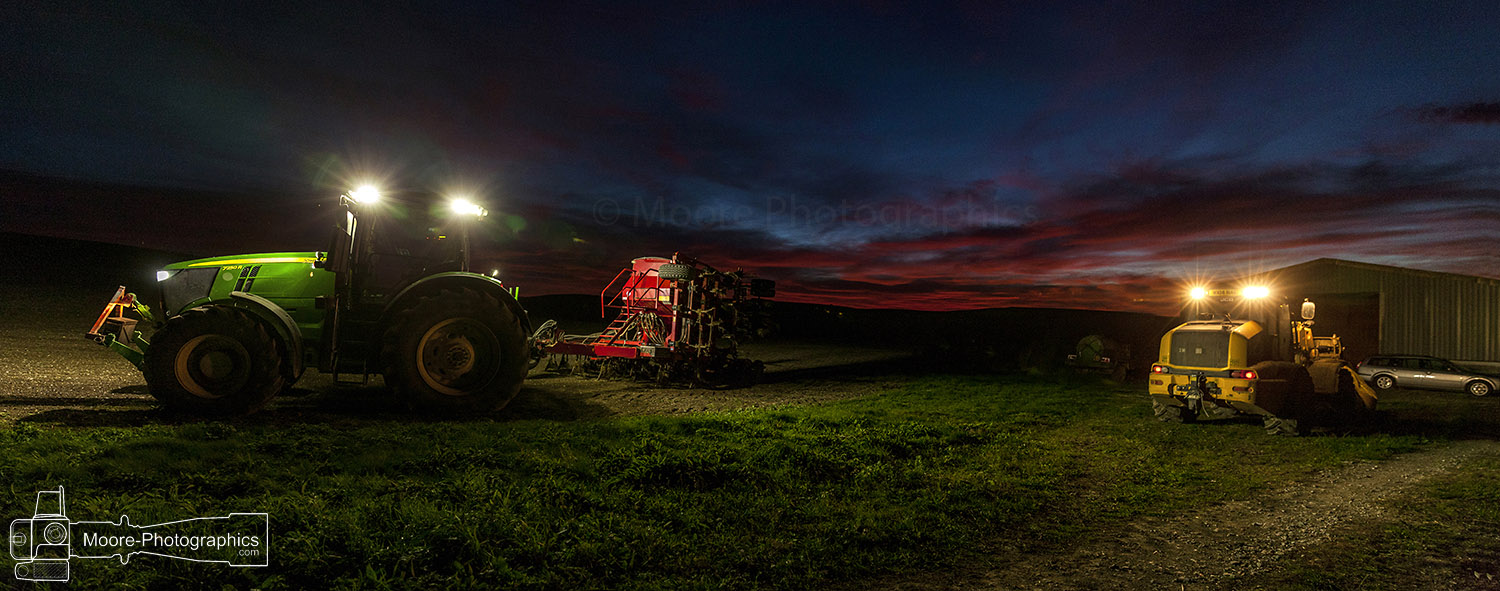I thought I’d start the new year by sharing another of my photographic passions – capturing different subjects at night with slow shutter speeds, which is great fun.
What do you need to think about when photographing night shots?
- You need to use a tripod, because if you get a coughing fit or sneeze, or make any real movement, it will upset your equilibrium and your shot won’t be in focus.
- The whole thing about night shots is getting the camera settings correct – using a long exposure or slow-shutter. This involves leaving the camera’s shutter open for long than normal to capture an image.
- Sometimes you can use a density filter, which tricks the camera into thinking that the scene is darker than it is in reality, and this makes the camera keep the shutter open for longer to let in more light.
- Long exposures can create a sense of motion by blurring the moving elements in the image, or it can create a sense of stillness. It can reveal details in the darker areas of what you are capturing. And if you’re photographing water, it can transform the ordinary into something quite magical, for instance, by freezing the movement of the water and create a smooth silk-like effect.
- Sometimes, while your shutter is open, if you are photographing a busy night scene you capture things that you hadn’t planned for so it’s always an interesting type of photography.
- Settings for night shots – generally, you need to set your camera to M – manual mode; shutter speed 20 to 60 seconds; aperture f/8, f/11 or f/16; ISO – 100 or 200. There is a formula I use depending which lens I am using do set the shutter speed and aperture.
- When photographing the moon with a long lens the settings are quite different. Using 400mm and longer lenses (telescopes) the moon moves very quickly across the field of view, so I tend to use around 1/4000 second which freezes the moon.
7 subjects I’ve enjoyed capturing at night:
- Perhaps one of the most obvious subject, is the moon and especially when it’s at its fullest. Also, the best place to photograph the moon is in a dark sky with little light pollution from buildings or particularly, cities. It’s always best to use a tripod, but if you do handhold your camera, you need to keep extremely still.
- The trails of car lights. When the shutter stays open, it captures the car lights, creating a stream of bright colourful threads of light as the cars pass through. This works particularly well if you can photograph from a motorway bridge during a busy time. Another good time to capture this, is when cars are driving through snow at night.
- A vibrant street market, such as the one I captured in the Philippines. Some people don’t notice you, and you’re able to capture the hustle and bustle of everyone around you. Occasionally, you’ll pick up something that you hadn’t noticed with your eyes, but the camera has captured it. You can even capture the smoke coming from the food vendors cooking when the settings are correct.
- A working lighthouse is wonderful to capture too. If you’re lucky and it’s a very dark night you’ll even record the stars in the sky too alongside the beams splaying out from the lighthouse lamp.
- At certain times of the year, like harvest time, you can get magical photos by capturing the sky changing colour as the sun sets, alongside the lights of the working farm vehicles. You can end up with a whole range of different light sources, creating a fascinating image.
- Nighttime Carnivals and festivals can be very atmospheric too, from the varying colours, buildings, to the many different light sources plus the addition of costumes.
- One of the most fascinating things to capture with a slow shutter speed is water. You can create an effect where the water looks like silk, rather than the wild, rushing source that it might be. And photographing the sea crashing over rocks at night with a slow shutter speed can create a wonderfully ethereal image.









